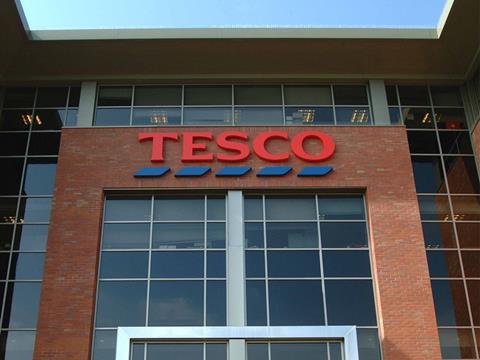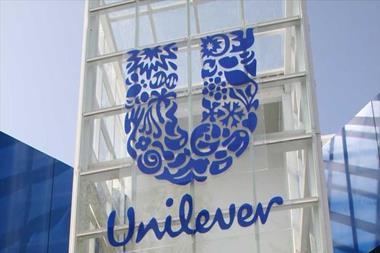
After some pretty horrendous Tesco results – with profit warnings, black holes in the accounting and one of the biggest losses in corporate history – it was the brightest week at Britain’s biggest supermarket since Dave Lewis was parachuted into the troubled business two years ago.
Lewis’ mix of lower prices, better availability, a trimmed range and new ‘Farm’ brands has seen shoppers returning to Tesco stores from rivals and like-for-like sales growing for three consecutive quarters.
And future guidance to improve margins from the razor thin 2.2% at present to 4% in three years also excited investors, with shares soaring 10% on Wednesday when the results were released.
However, one cloud loomed large and threatened to spoil Lewis’ moment in the sun: a £3.2bn jump in the pension shortfall to £5.9bn.
So why has Tesco’s pension situation worsened so much when the defined benefit pension has been axed? Could it derail the recovery? Or are the eye-watering figures not as much of a problem as they seem?
CFO Alan Stewart brushed aside the rising obligations to the scheme, calling the deficit “very much an accounting measure”. He insisted that Tesco didn’t have to increase its contributions to the scheme and that the value of pension fund assets had actually risen since February.
Falling bond yields
So can a 124% jump in Tesco’s pensions deficit be shrugged off as simply a technical accounting matter?
In fairness to Tesco the huge leap does make its pensions situation – and overall indebtedness – appear worse than it actually is. Tesco uses corporate bond yields to calculate the extent its pensions obligations are funded. The problem here is that the collapse in corporate bond yields since Brexit has created an unfunded hole in its balance sheet – but that hole will only exist in a material sense if corporate bonds remain at rock bottom.
Corporate bonds are at a five-year low and it’s more than likely some recovery in bond yields as the UK post-Brexit situation settles down will see this expanded deficit reduce well before it materially impacts Tesco’s day-to-day operations.
Moody’s, which rates Tesco’s creditworthiness at a sub-investment grade Ba1 (stable), agreed paying too much attention to the pensions deficit fluctuations was unhelpful. “As a general principle, due to the variability in pension deficits caused by changes in bond yields, we evaluate the adjustments made to leverage arising from pension liabilities over the medium term rather than at a single point in time.”
One of Tesco’s key strategic goals is to improve its credit rating position after Moody’s downgraded its debt to ‘junk’ status in 2015.
However, despite what Moody’s noted was a “continuation of positive trading momentum” it still seems a long way from upgrading Tesco back to investment grade.
“Even setting aside the impact of lower bond yields on adjusted debt, the recovery in metrics has been slower than we anticipated at the time of the downgrade to Ba1 in January 2015,” the ratings agency said today.
It added that Tesco is now further away from the leverage metric it previously stated needed to be achieved to avoid further downwards pressure developing from a rating perspective.
The crucial date to look out for here is March 2017 when Tesco completes its next triennial review of its pensions obligations.
If yields are still low and the deficit is still high, Tesco may find itself having to increase its annual contributions from the current £270m per year – which will directly hit its cashflow and bottom line.
High leverage
More worrying perhaps than the widening hole in the pension fund is its effect on the size of Tesco’s overall indebtedness, which includes leases. At the end of the half Tesco’s total debt jumped £2.5bn to £18bn – more than seven times its projected operating profits for the full year. And this was despite net debt coming down by £758m to £4.4bn after offloading the Homeplus stores in South Korea and the lossmaking Turkish business.
Clive Black at Shore Capital welcomed the progress made in the core supermarket business but warned that the burden of broad level indebtedness and the corresponding high solvency ratios prevent the broker from taking a more positive view on the group’s shares.
“The mushrooming of the IAS 19 pension deficit is a body blow to the overall aspiration of Tesco to structurally de-leverage. [But] we do not believe that this necessarily should be a drain upon the near-term cash flows of the group, following the agreement to inject £270m of cash per annum. Therefore, whilst somewhat eye-watering, the IAS measure should not overly distort investor thinking.
“What we cannot get away from though is the broader high leverage levels.”
While the £5.9bn pension deficit may not be a worry for Tesco’s recovery in the near term, the problem in the post-Brexit world – especially if we get PM Theresa May’s “hard Brexit” – is that the economy is likely to remain sluggish, with bond yields down and interest rates low.
Goldman Sachs also warned in a report this week that many of the big corporates with pension holes could take as much as 20 years to fill the shortfall.
Bad news for long-suffering shareholders whose prospects of seeing any dividends won’t improve as the deficit grows after Stewart hinted that a return of dividends, which were last paid in early 2014, were a long way off.















No comments yet